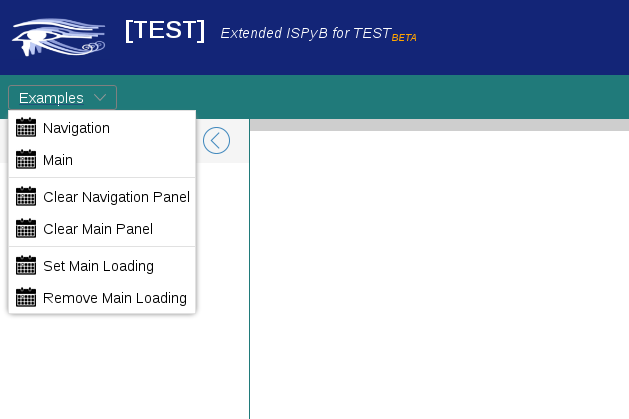EXI is just another user interface for ISPyB and supports: MX, BioSAXS and EM. It connects to ISPyB via RESTful webservices.
In order to build EXI, you need to have:
- The latest npm and git 1.7 or later. Earlier versions might work, but are not supported.
- Bower (installable from npm)
- Grunt version v0.4.5 or later (http://gruntjs.com/)
- npm
Clone a copy of the main EXI git repo by running:
git clone git://github.com/ispyb/EXI.gitEnter into the installation directory and run the build script:
npm installDownload dependencies by running:
bower installIf you want to see which dependencies EXI needs run:
bower listBuild EXI by running Grunt, the javascript task runner
gruntIn order to configure EXI some modifications should be done on config.js that it may be found on:
- /saxs/config.js
- /mx/config.js
- /test/config.js
- /tracking/config.js
It allows to use different configuration for different techniques/beamlines.
The format of the file is JSON and it looks like this
{
"sites":[
{
"name":"ESRF",
"url":"https://wwws.esrf.fr/ispyb/ispyb-ws/rest",
"beamlines":{
"SAXS":[
{
"name" : "BM29"
}
],
"EM" :[
{
"name" : "CM01"
}
],
"MX":[
{
"name" : "ID23-1",
"sampleChangerType" : 'FlexHCDDual'
},
{
"name" : "ID23-2",
"sampleChangerType" : 'FlexHCDUnipuckPlate'
},
{
"name" : "ID29",
"sampleChangerType" : 'FlexHCDDual'
},
{
"name" : "ID30A-1",
"sampleChangerType" : 'RoboDiffHCDSC3'
},
]
}
}
]
}Detectors node defines the detectors used as a hash map "name of detector" :
Sites node define to which sources EXI will be able to connect. These are the main parameters to be defined:
- name: this name is an ID for the site and will appear when you sign in
- url : a valid url pointing to the rest webservices from a ISPyB active instance
- exiurl : !ONTEST this is pointing to the offline data analysis server set of webservices
- Beamlines
If you want to build a version where the javascript will be not minified for developing then use the profile dev
grunt devGlobally install http-server in case you haven't done this before
npm i -g http-serverStart the http-server. Http-server will display the URL to open EXI in your favourite browser.
http-serverSee http-server on Github for configuration options.
Using bower one can update a package by typing:
bower update ispyb-js-api
EXI makes an intensive use of HTML templates. Dustjs has been chosen as engine because:
- High integration with Grunt
- Easy to use
- Maintened by linkedin
- Possibility to precompile the template in order to execute them faster
Use case:
- Template can be uses when we want to render HTML within a Ext component. For instance a column on a Ext.grid.Panel object
- Create a javascript file on /templates
- The name of the file will correspond with the name of the template that dust will give to the precompiled function Example: templates/test.js
<table>
{#.}
<tr>
<td>
{.count}
</td>
<td>
{.step}
</td>
</tr>
{/.}
</table>
- Run Grunt or Grunt dev. Because we need to precompile the templates we need to build the application before hand
- Use the template
dust.render("workflowstepsection_workflowstep", [{step:'test1', count:5},{step:'test2', count:4},], function(err, out){
console.log(out);
});The expected output is:
<table><tr><td>5</td><td>test1</td></tr><tr><td>4</td><td>test2</td></tr></table>
There is a new task on Grunt. It takes all the javascript files on templates folder and it precompiles on the min folder
dustjs: {
compile: {
files: {
'min/precompiled.templates.min.js': ['templates/*js']
}
}
}
EXI contains a demo application called test in order to understand how EXI is done. You can access by typing:
http://myserver:8082/EXI/test/dev.html#
This will open a website with a menu bar similar to:

Demo app is composed basically by few files under js/test folder:
- testcontroller.js
- exitest.js
- testmainview.js
- testlistview.js
- testlistview.template.js
- testmainmenu
EXI controllers uses PATHJS to make an action based on the url. Demo application user TestController class that is written in testcontroller.js. This is an example how an action is defined:
Path.map("#/:name/main").to(function() {
var name = this.params['name'];
var mainView = new TestMainView();
EXI.addMainPanel(mainView);
mainView.load( name);
}).enter(this.setPageBackground);